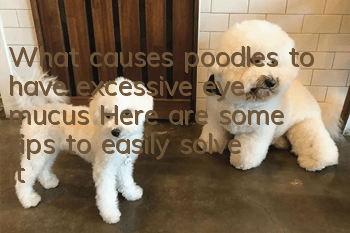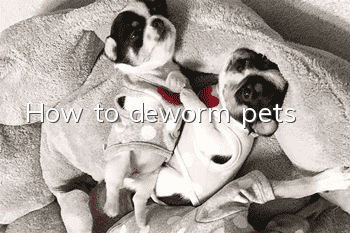How to know if your dog has skin disease? Tips on protecting your dog’s skin

How to determine if your dog has skin disease
Generally, dogs will scratch their bodies occasionally, which is normal. However, if the dog scratches one part for a long time and frequently, it means that there may be a skin disease in this part, and the owner should remove the dog's hair for inspection.Oval or round ringworm spots will appear on the skin of dogs with fungal infection, with tiny flakes of skin, like scales. If a dog has mites, it will develop many small pimples, and the dog will scratch frequently due to itching. If your dog has fleas, you can see the small black spots (feces) and small white spots (eggs) left by the fleas on the dog's coat. When a dog suffers from pyoderma, owners may see pustular rashes, small pustules, and purulent discharge on the dog's skin. When a dog suffers from seborrheic dermatitis, the owner can see yellow-brown oil patches attached to the skin and coat at the base of the dog's tail where the sebaceous glands are developed. Dogs suffering from eczema will have spots or erythematous eczema of different shapes.
How to deal with skin diseases in dogs
If you find that your dog has skin diseases, you should seek medical treatment immediately and do not use human ointments without authorization. The owner should take the dog to a specialized pet hospital for treatment. The general treatment method is medicated bath + topical application of Mingruin. It may be necessary to shave part of the dog's hair. In order to prevent the dog from licking and scratching the affected area, the owner should wear an Elizabethan collar on the dog, and the dog's daily necessities should be cleaned in time. Tips to protect your dog’s skin
1. Do not use human shampoo and shower gel on your dog. Choose a pet-specific shower gel.2. Do not bathe your dog with water that is too hot. If the water is too hot and you bathe too frequently, your dog’s skin will become dry and itchy.
3. Give your dog plenty of water to keep his skin hydrated, which is good for his skin.
4. Dogs should also be supplemented with calcium and trace elements on a daily basis. Comprehensive nutrition will contribute to the healthy development of dogs.
5. Take your dog for moderate exercise and maintain a certain amount of activity.
6. Do not feed your dog seafood, desserts and other foods that humans like, as they can easily cause allergies and obesity in dogs.
Random articles
- Tips for raising a Portuguese Water Dog
- How to train Chinese Shar-Pei
- Can dogs eat prune meat?
- Why hasn’t my dog pooped in a few days?
- Can pregnant women keep pets? How to avoid Toxoplasma gondii infection during pregnancy?
- Is the dog’s vision good? What does the world look like through the dog’s eyes?
- How many days will it take for a puppy to recover from a cold?
- Why does my dog keep coughing?
- Are American Akita dogs easy to raise? How to choose correctly?
- What to do about dog eczema



